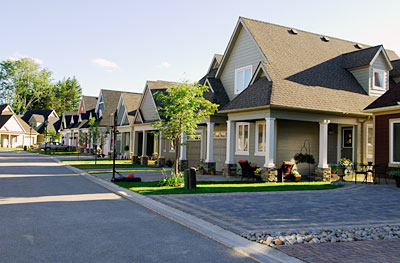Curbs and Gutters
Curb Design
Advantages | Types | Requirements | Design | AASHTO Standards | Joints | Drainage | Materials | Construction
 The design of curbs is more dependent on successful experience and regional preferences, and less on rigorous analyses compared to the design of other concrete structures. The review of a few available publications on concrete curbs reveals what types have been used but there is no specification regarding the forces acting on curbs or calculations on reducing stresses to acceptable limits. This is because experience has shown that curb sections proportioned to have adequate mass to provide the required stability are unlikely to fail from any imposed loads or impacts. Like other concrete members, curbs should be jointed or reinforced to accommodate the effects of volume changes due to shrinkage, temperature, or moisture changes.
The design of curbs is more dependent on successful experience and regional preferences, and less on rigorous analyses compared to the design of other concrete structures. The review of a few available publications on concrete curbs reveals what types have been used but there is no specification regarding the forces acting on curbs or calculations on reducing stresses to acceptable limits. This is because experience has shown that curb sections proportioned to have adequate mass to provide the required stability are unlikely to fail from any imposed loads or impacts. Like other concrete members, curbs should be jointed or reinforced to accommodate the effects of volume changes due to shrinkage, temperature, or moisture changes.
Besides meeting the basic requirements discussed above, good curb design should allow economical and efficient construction. Economical construction results from designs that reduce labor, permit the use of any of the efficient curb forming machines available today, and take advantage of standardized cross sections that provide the necessary properties. Minor variations in shapes or dimensions that add nothing to the strength or utility should be avoided. Templates or "mules" can be manufactured for any desired cross-sections form curb shapes, but they are costly. If the entire cost of a special mule must be amortized on a single project, the cost of the curb must necessarily be increased to cover that expense, even though the utility of the curb is not increased over that of a similar standard section.


